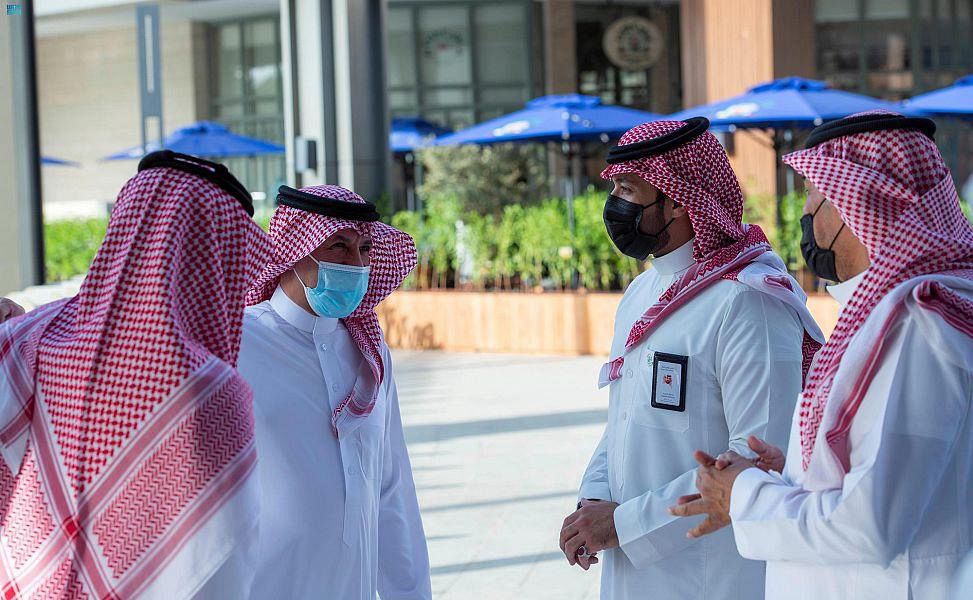
BEIRUT: Saudi Arabia’s Ambassador to Lebanon Walid Bukhari and Lebanon’s Minister of Information Jamal Jarrah on Monday inaugurated a photography exhibition celebrating 90 years of bilateral relations.
The King Abdul Aziz Foundation for Research and Archives and the Abdulaziz Saud Al-Babtain Cultural Foundation provided the embassy in Lebanon with historical documents and photos for the exhibition, which was launched on World Photography Day. Some of the material dates back more than 90 years.
Bukhari said the exhibition’s content proved that the countries’ relations were rooted in history and recalled the words of King Abdul Aziz bin Abdulrahman, who said: “Lebanon is part of us. I protect its independence myself and will not allow anything to harm it.”
Jarrah, who was representing Prime Minister Saad Hariri, said: “We need this Arab embrace in light of the attacks targeting the Arab region and we still need the Kingdom’s support for Lebanon’s stability, because Lebanon is truly the center from which Arabism originated.”
The exhibition starts with a document appointing Mohammed Eid Al-Rawaf as the Kingdom’s consul in Syria and Lebanon. It was signed by King Abdul Aziz bin Abdulrahman Al-Faisal Al-Saud in 1930 and states that the consul’s residence is in Damascus and that his mission is to “promote Saudi merchants, care for their affairs and assist them with their legal and commercial interests.”
Black and white pictures summarize milestones in the development of bilateral relations, while others depict key visits and meetings between leaders and dignitaries.
“The exhibition demanded great efforts because the pieces were not found at one single location,” former Prime Minister Fouad Siniora told Arab News. “Circulating this activity in the Kingdom’s embassies in numerous countries is a great step and has pushed the Lebanese Ministry of Information to benefit from this archive. The Lebanese people remember the important positions the Kingdom has taken over the year to support their independence and sovereignty and in hard times.”
Lebanon, particularly Beirut, is a hit with Saudi travelers although the Kingdom had been advising citizens since 2011 to avoid the country, citing Hezbollah’s influence and instability from the war in neighboring Syria.
But the easing of restrictions since February has led to a surge in Saudis heading to Lebanon.
Riyadh earlier this year released $1 billion in funding and pledged to boost Lebanon’s struggling economy. Another sign of warming ties was an anniversary event marking the 2005 assassination of Hariri’s father that featured Saudi Royal Court adviser Nizar Al-Aloula as a keynote speaker.
“The exhibition highlights the unique model of Lebanese-Arab relations that should be taught in diplomatic institutes, starting with the Lebanese Foreign Ministry,” former minister Marwan Hamadeh told Arab News. “Over the course of 90 years, we have had brotherly ties and political support for independence, freedom, growth, economy and culture and then the Taif Accord (which ended the Lebanese Civil War). Even after that, when Lebanon engaged in military adventures, the Kingdom was there to help with reconstruction and we are proud of these relations.”
Highlights include a recording of King Faisal telling President Charles Helou about the need to strengthen “brotherhood in the face of the aggression targeting our countries without respecting the sanctity of holy sites and international, human and moral norms to extend its influence not only in the region but across the world.”
There are also photos from a recent meeting that brought together King Salman, Crown Prince Mohammed bin Salman and Lebanese officials.
An old broadcast recording can be heard saying that the “tragedy of the Lebanese civil war can only be ended by affirming the Lebanese legitimacy and preserving its independence and territorial integrity.”
The exhibition is on at Beit Beirut, which is located on what used to be the frontline that divided the city during the civil war.









